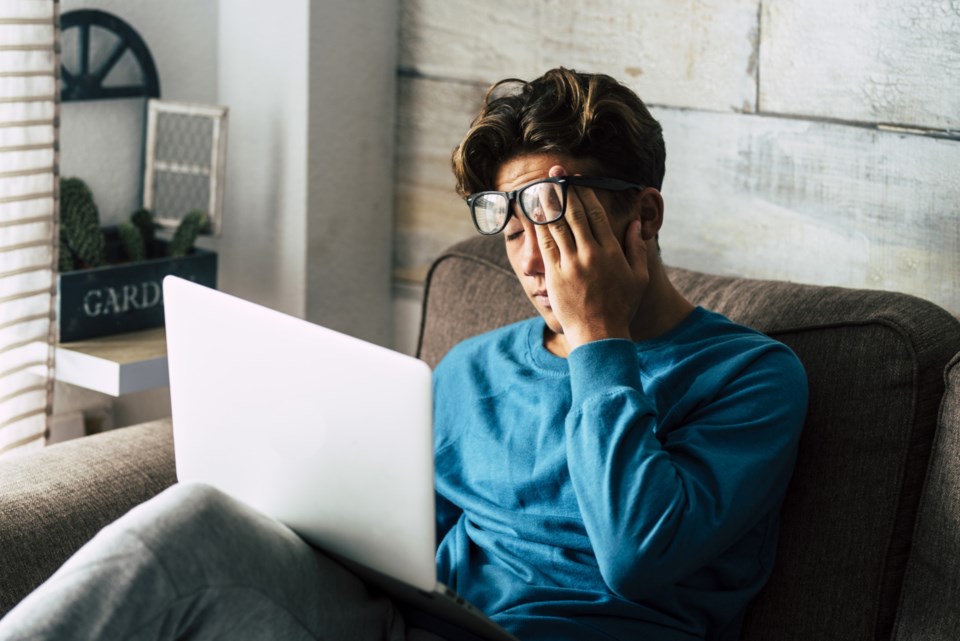As another virtual university semester unfolds — the second or even third for some since the beginning of the pandemic — fatigue and declining satisfaction with this remote format seem to be increasingly felt on both sides of the screen.
On the one hand, there are students worried about the quality of the courses they are taking, but above all, they are missing out on campus and community life. On the other hand, there are teachers feeling breathlessly short of resources, who have been pushed overnight to change their practices and run their classes from home.
Beyond the purely pedagogical impacts, the issue of mental health for everyone is of concern today. Having personally had to give online courses to more than 250 undergraduate students over these past weeks, I have been able to experience these issues and to feel the limits of this new way of teaching.
Web influencer or academic expert?
The temptation — but also often the pressure — to draw out a host of technological tools to capture and maintain the attention of students or facilitate their collaboration is often very strong. Certainly, the idea of teaching a class live on Twitch or in a fictional world on Minecraft and then continuing the discussion on Discord or Slack can be exciting. But in this particular context, the teacher is sometimes more of a online influencer than an academic expert.
These technological choices also confront teachers with limits, both logistical and human. What can we say to the many students who access this content from their cell phones and therefore from their cellular data, or to those who do not yet have a computer and a high-performance internet connection?
What to do with students who have to share their workspace with the rest of the family, who don’t have a good grasp of these different tools or who have to learn how to use a range of different applications for each of their courses?
These issues also illustrate the very real risk of creating new barriers to inclusion in education.
So, before mobilizing such hardware, it is important to consider not only the ability of students to grasp it, but also the ability of teachers to train themselves sufficiently to offer a positive learning experience. More importantly, this is also an opportunity to learn about other modes of distance education and finally to move away from a vision requiring more and more tools and overstimulation.
A more human approach
What if one of the answers to the challenges of distance learning is to go back to basics and set up contexts that are less “techno” and more human?
In their work on the experience economy, consultants Joseph Pine and Jim Gilmore explore how value can be created based on the experience of “guests” (whether as consumers in shops or visitors to museums). They propose four categories for experience: educational, entertainment, escapist and esthetic. “Esthetic” experiences, they argue, are those in which participants are invited to adopt a contemplative posture. The experience then aims at harmony of the senses and attaining a kind of individual fullness.
An example of that could be a visit to a museum, where people walk around, sit on a bench and get lost in their thoughts. It contrasts sharply with an entertainment experience such as a music show or an amusement park. It’s a celebration of slowness, of a more subtle but equally engaging non-technological stimulation.
This kind of call for a slower, more informal pedagogical approach isn’t new. Moreover, the idea of lowering the pace, or to prune the content a little to facilitate retention without affecting the quality, was slowly gaining ground long before the pandemic.
Create an atmosphere conducive to reflection
So, instead of using yet another collaborative tool during a Zoom course, why not simply create an atmosphere conducive to reflection through a warm decor, a little nature, something to watch or music that is pleasant to listen to?
Similarly, why not open the virtual rooms earlier, or close them later, for those who want to exchange in a more informal setting. Why not send the content in advance so as to take advantage of these so-called “synchronous moments” to interact and inject some human warmth?
Finally, it is possible to enhance non-visual stimuli to allow students to take a break from their screens for even a brief moment. The simple act of recording podcast episodes or transmitting assessments via audio not only gives students a break for their eyes but also offers more flexibility in when and where they can view the content. The opportunity has also come to rediscover the charms of a simple telephone conversation, instead of another videoconference.
Since this virtual mode of teaching is expected to continue at least until next fall or winter and to play a greater role in university curricula after the pandemic, it is not too late to imagine modes of engagement that are more mindful of individual constraints.
According to Pine and Gilmore, any good experience must be thought of in the broader context in which it takes place. So, rather than relying on the equivalent of an online lecture, let’s reconsider. Keep in mind the constraints of the moment and imagine courses that allow you to vary the contexts in which you immerse yourself, whether it’s by the fire or even under the comforter!![]()
Louis-Etienne Dubois, Assistant Professor, School of Creative Industries, Faculty of Communication and Design, Ryerson University
This article is republished from The Conversation under a Creative Commons license. Read the original article.



